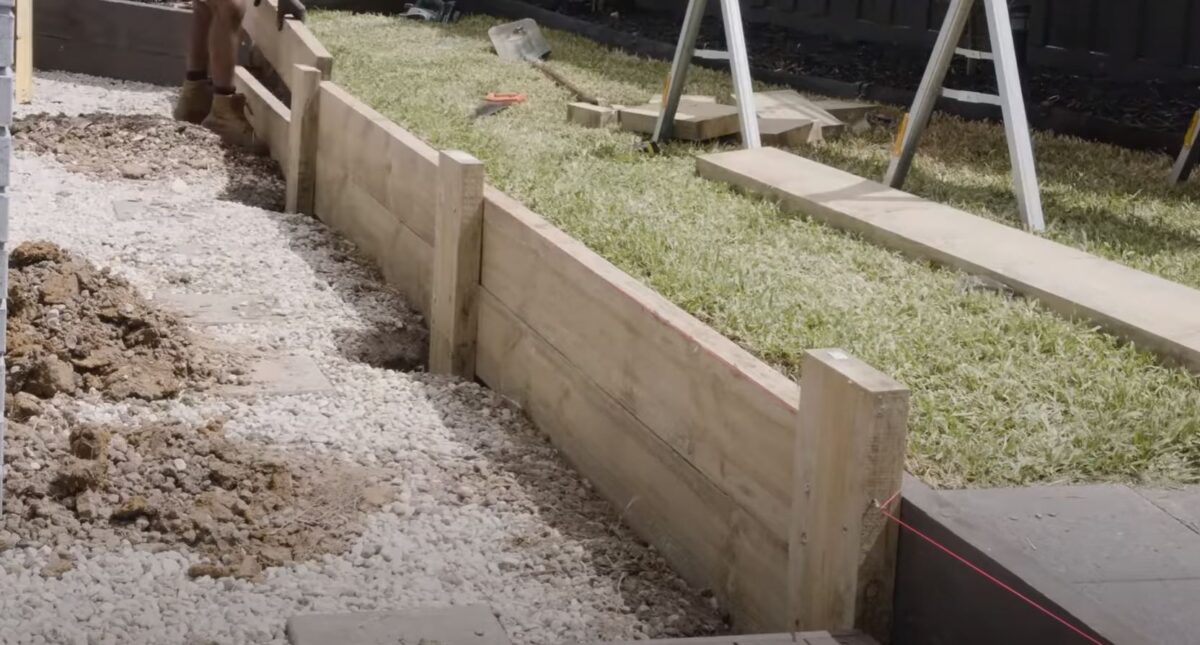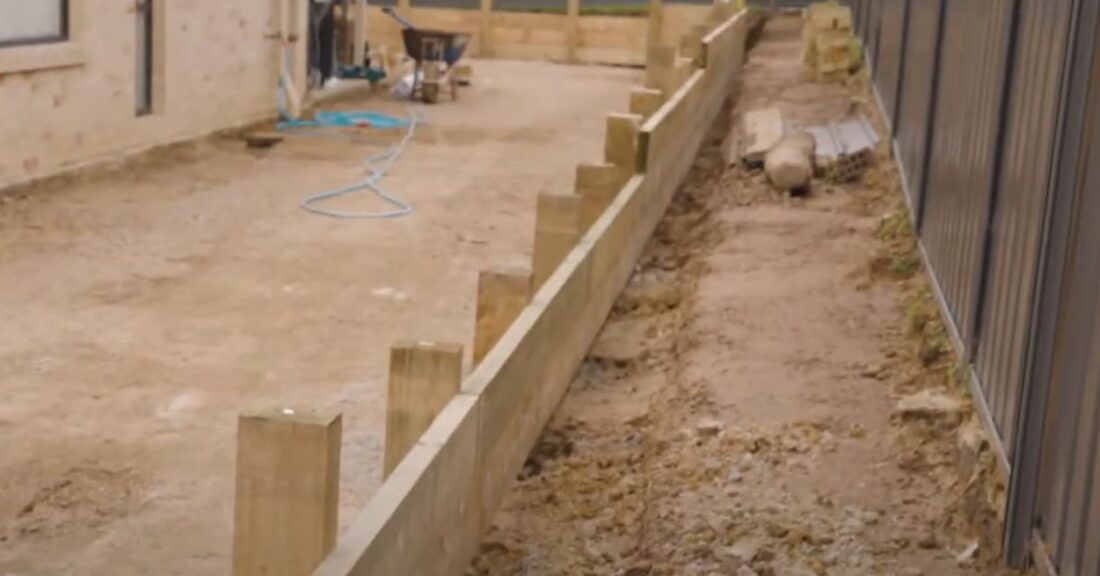Understanding Auckland Council’s Drainage Guidelines for Retaining Walls**
When constructing a retaining wall in Auckland, it’s essential to be aware of the specific guidelines set by the Auckland Council, particularly regarding drainage. These guidelines are crucial for the safety, functionality, and longevity of the retaining walls, especially in suburbs like Kingsland and Long Bay.
Auckland Council Guidelines for Retaining Wall Drainage
The Auckland Council provides comprehensive guidance on the construction of retaining walls, including the requirements for drainage systems. These guidelines ensure that retaining walls are built to withstand the local environmental conditions and soil types.
- Building Consent: For retaining walls of certain heights and locations, a building consent may be required. This is particularly important if the wall is near a boundary or involves significant earthworks.
- Drainage System Necessity: Effective drainage systems are crucial for all retaining walls to prevent water buildup behind the wall, which can lead to structural failure. This typically includes the use of granular, free-draining gravel, perforated or slotted drainage pipes, and weep holes.
- Design and Engineering Requirements: Walls exceeding a certain height or complexity may need to be specifically designed by a registered engineer. The design must account for soil properties, water pressures, and drainage requirements
The Auckland Council provides comprehensive guidance on the construction of retaining walls, including the requirements for drainage systems. These guidelines ensure that retaining walls are built to withstand the local environmental conditions and soil types.
- Building Consent: For retaining walls of certain heights and locations, a building consent may be required. This is particularly important if the wall is near a boundary or involves significant earthworks.
- Drainage System Necessity: Effective drainage systems are crucial for all retaining walls to prevent water buildup behind the wall, which can lead to structural failure. This typically includes the use of granular, free-draining gravel, perforated or slotted drainage pipes, and weep holes.
- Design and Engineering Requirements: Walls exceeding a certain height or complexity may need to be specifically designed by a registered engineer. The design must account for soil properties, water pressures, and drainage requirements.
Health and Safety Considerations
- Regular Inspections: Regular monitoring and maintenance are essential for retaining walls, especially after heavy rainfall or other extreme weather events, to detect any signs of structural damage, water logging, or decay.
- Professional Installation: It’s advised to engage professionals for the construction and drainage installation of retaining walls. This ensures compliance with local regulations and safety standards.
Timber Options for Retaining Walls in Auckland
In Auckland’s varied landscapes, including areas like Kingsland and Long Bay, different timber options are available for retaining walls, each with its use cases, pros, and cons:
- Pressure-Treated Softwoods: Widely used due to their affordability and resistance to rot and pests. Ideal for standard retaining wall projects.
- Natural Hardwoods: Offer greater durability and natural resistance to decay but are more expensive.
- Cedar Wood: Known for its natural resistance to moisture and decay but comes at a higher cost.
- Recycled Timber: An eco-friendly option that can vary in quality and durability.
By understanding these guidelines and choosing the right materials, Auckland residents can ensure their retaining walls are not only functional and safe but also
beautiful and enhance their property’s aesthetic appeal. Proper planning and adherence to Auckland Council guidelines can make a significant difference in the successful implementation of a retaining wall project.
In conclusion, for those residing in Auckland and looking to build a retaining wall, whether in Kingsland, Long Bay, or any other suburb, it’s important to follow the Auckland Council’s guidelines for drainage. This ensures the longevity and safety of the wall. Additionally, selecting the right type of timber based on use cases and local conditions can further enhance the wall’s functionality and aesthetic value. For expert guidance and construction, services like Quality Fencing Auckland offer professional retaining wall builder Auckland wide expertise to ensure your retaining wall meets all necessary standards.
Frequently Asked Questions on Auckland Council’s Drainage Guidelines for Retaining Walls
What Are Auckland Council’s Basic Requirements for Retaining Wall Drainage?
Auckland Council mandates that retaining walls have efficient drainage systems to prevent water accumulation and soil erosion, ensuring the wall’s stability and longevity.
Does the Height of the Retaining Wall Affect the Drainage Requirements?
Yes, the height of the retaining wall influences drainage requirements, with taller walls generally needing more comprehensive drainage solutions.
Are There Specific Drainage Materials Recommended by Auckland Council?
The council recommends using materials like gravel backfill and perforated drainage pipes that facilitate effective water drainage away from the wall.
How Do Soil Conditions Impact Drainage Guidelines?
The type of soil, whether it’s sandy or clay-rich, affects drainage needs. Auckland Council guidelines take soil type into account for drainage system design.
Is Professional Consultation Required for Retaining Wall Drainage?
For complex projects, especially in sensitive areas like Kingsland and Long Bay, Auckland Council advises consulting with drainage experts or engineers.
Do Retaining Walls in Coastal Areas Have Special Drainage Requirements?
Yes, coastal areas may require additional considerations for drainage due to higher exposure to moisture and potential saltwater intrusion.
How Often Should Retaining Wall Drainage Systems Be Inspected?
Regular inspections, at least annually or after significant rainfall events, are recommended to ensure the
How Often Should Retaining Wall Drainage Systems Be Inspected?
Regular inspections, at least annually or after significant rainfall events, are recommended to ensure the drainage system remains effective and free from blockages.
What Are the Consequences of Non-Compliance with These Guidelines?
Non-compliance can lead to retaining wall failure, safety hazards, and potential legal ramifications, including fines or required reconstruction.
Does Auckland Council Require Specific Design Plans for Retaining Wall Drainage?
For certain projects, detailed design plans for drainage systems may be required, especially for walls above a certain height or in specific locations.
Are Drainage Considerations Different for Walls Near Water Bodies?
Retaining walls near water bodies, such as in Long Bay, might need specialized drainage solutions to handle potential water level fluctuations and prevent erosion.
How Does Auckland Council Address Drainage for Walls in Flood-Prone Areas?
In flood-prone areas, additional drainage measures might be necessary to manage the higher volume of water and reduce the risk of wall failure.
What Type of Drainage System Is Most Commonly Recommended?
Commonly, a combination of gravel backfill, perforated pipes, and weep holes is recommended to ensure comprehensive water management.
Can Homeowners Install Retaining Wall Drainage Without Professional Help?
While simple drainage systems can be a DIY project, Auckland Council advises seeking professional help for complex or larger walls to ensure compliance and safety.
Does the Council Provide Guidelines for DIY Retaining Wall Projects?
Yes, the council offers guidance for DIY projects, but it’s crucial to adhere to the recommended standards for drainage and construction.
What Should Be Considered When Planning Drainage for a Terrace or Sloped Garden Wall?
For terraced or sloped garden walls, like those often seen in Kingsland, it’s important to consider the additional water flow and pressure due to the slope. Auckland Council guidelines may require more intricate drainage strategies in these scenarios.
How Does Auckland Council Recommend Dealing With Groundwater in Retaining Wall Design?
The council advises incorporating drainage solutions like chimney, composite, or blanket drains in the design to manage groundwater effectively and prevent hydrostatic pressure build-up.
Are Retaining Wall Drainage Systems Different in Urban Versus Rural Auckland Areas?
The basic principles remain the same, but urban settings might have additional considerations like proximity to existing structures and underground utilities.
What Role Does Drainage Play in the Overall Stability of a Retaining Wall?
Proper drainage is essential for the stability of a retaining wall, as it prevents water buildup and soil erosion behind the wall, which can lead to structural failure.
**Legal Disclaimer:
The information provided in this document is intended for general informational purposes only and does not constitute legal, professional, or expert advice. It is advisable to seek guidance from legal or professional experts familiar with your specific circumstances before making any decisions based on the content herein. Neither the author nor the publisher is responsible for any damages or losses resulting from reliance on the information provided in this document. Always consult with an appropriate professional to address your specific needs.


